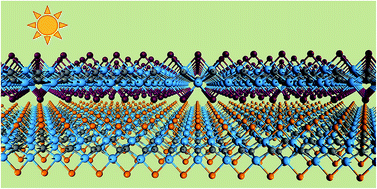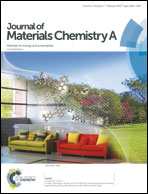Novel titanium nitride halide TiNX (X = F, Cl, Br) monolayers: potential materials for highly efficient excitonic solar cells†
Abstract
The growth in the area of two-dimensional (2D) crystals offers renewed opportunities for efficient, ultrathin excitonic solar cells (XSCs) beyond those three-dimensional traditional materials. Here, based on first principles, we propose a family of achievable 2D tetragonal-structured titanium nitride halides (TiNX, X = F, Cl, Br) as donor and acceptor materials for XSCs in virtue of their desirable optoelectronic properties, such as a direct bandgap with moderate size, superior optical absorption, ultrahigh photoresponsivity together with very small effective masses and exciton binding energy. More importantly, we find that they can be easily superimposed onto each other to form effective solar cell systems with the type-II heterojunction alignment. We predict that the maximum energy conversion of the designed TiNF/TiNBr, TiNCl/TiNBr and TiNF/TiNCl bilayer solar cells can reach as high as ∼18%, 19% and 22%, respectively, which are far superior to those of typical conjugated polymer or fabricated 2D solar cell systems. Our work suggests these potential bilayer systems are appealing 2D solar cell materials with high efficiency.



 Please wait while we load your content...
Please wait while we load your content...